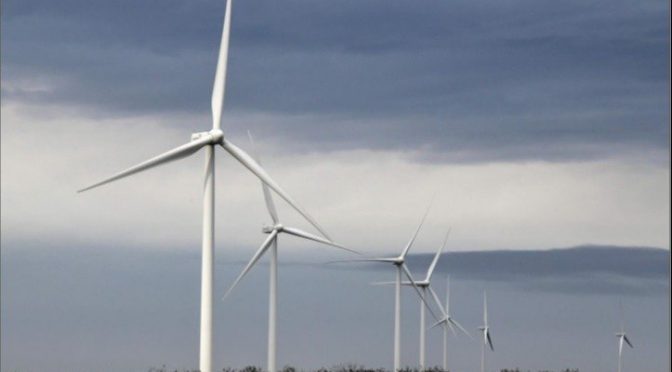Wind power generation from Olavarría wind turbines will have a high impact on the area. It will be in charge of the Ternium company, in order to achieve decarbonization of production processes and care for the environment. How does a wind farm work and what is its degree of environmental and social impact?
The engineer and reference to climate change Gabriel Blanco explained in a synthetic way that “a wind farm refers to a set of wind turbines or mills, whose blades are driven by the wind. This rotation produced by this natural resource moves a generator and ends up producing electrical energy. All this energy is connected to the network, which is the one that is distributed throughout the country”.
Gabriel Blanco highlights the use of wind to generate energy. Argentina generally does this through fossil fuels or natural gas. This is why starting to look for new resources and expanding the range of options are fundamental aspects to achieve “energy security and sovereignty,” explained the local reference.
A point that usually worries society at the time of the construction of parks of this magnitude resides in the visual impact that they produce. Many times it is considered that they can “spoil” the landscape at a certain point, to which noise is added.
Regarding this, Gabriel Blanco points out that these aspects are “rectifiable” and that they can be avoided as long as their construction is done correctly and in the right place.
It should be noted that “the impacts generated by a plant of this type are not null, but they are really much lower than what a nuclear or hydroelectric plant produces. Although the land is used because a large piece of land is needed, it can continue to be used for other purposes. Beyond this, there is no water use or air pollution. They are all positive and very interesting things, ”he said.
On the other hand, a new question arises… Why build it in Olavarría? Although there are things that cannot be known because it involves private interests (of the company or the city in question), the engineer, who also works as an FIO investigator, stated that “Olavarría has several characteristics that are positive for installation”.
“The type of land, the possibility of building in places where the impact is practically nil, the fact of being able to be away from the populated area, are all very positive aspects,” he said.
Likewise, “Olavarría is a central node of the interconnected energy system, which is a great advantage. This means that in Olavarría a large amount of electrical energy produced in different ways (for example, hydroelectric plants) is mixed and distributed to various cities in the province such as Mar Del Plata, Bahía Blanca and others. All this makes it very interesting to connect the wind power plant to the grid”, mentioned Gabriel Blanco.
At another point, the professional emphasized the country’s potential for the development of these infrastructures. “Although today Argentina imports this equipment, the country has the capacity, if it wanted at any time, to be able to develop them. Today they are imported but maybe one day the local growth of this will be supported, ”he said.
Already with his gaze set on another point, Gabriel Blanco acknowledged that, as he knows, “nobody who is related to the implementation of this plant had contact with the local university,” he proclaimed, very surprised due to the large amount of resources, mainly humans, that it could provide.
The wind farm in Olavarria
The project is expected to begin in the middle of this year and to start operating during the second half of 2024. The Ternium company will invest 160 million dollars for this.
“The Wind Farm represents a great milestone within the framework of our decarbonization plan, since it will allow us to increase our consumption of renewable energies and move towards an increasingly sustainable operation,” said Martín Berardi, executive president of Ternium Argentina.
This wind farm is expected to have a range of 72 MW of installed power. This will make possible an annual electricity production of around 346 GWH from renewable sources.

